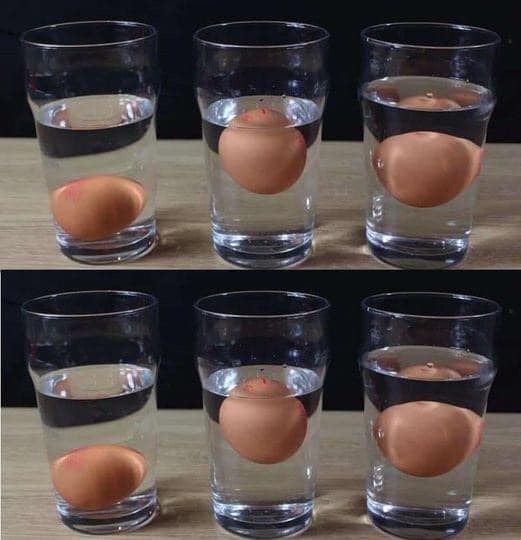Your eyes can also help you identify whether an egg is expired or edible.
Before consuming a product, it is best to visually inspect it to avoid any risk. According to the specialist, it is necessary to check if the shell is not powdery, viscous or cracked.
Any questionable appearance may reveal the presence of mold. Additionally, if the shell is dry and appears to be in good condition, break the egg into a bowl and identify any suspicious discoloration.
Typically it is a blue, pink, black or green color in the egg white or yolk. In fact, it can reveal the growth of bacteria that can cause food poisoning.
As confirmed by Dr Julia Roux, gastroenterologist, salmonella are bacteria that can be found in eggs and preparations made from raw or undercooked eggs, as well as in dairy products.
These germs can cause salmonellosis, an intoxication which causes symptoms such as fever, diarrhea, vomiting and even abdominal pain.
Furthermore, if the egg yolk or white is leaking, this may indicate that the egg is aged but may not have reached its limit of use.
4. Dip the egg in water
According to LCI, another technique can be effective in determining whether the egg is still edible.
To do this, you must immerse the egg in a saucepan or salad bowl filled with water. If it sinks to the bottom of the container, it is still good for consumption.
But if it remains erect, that means it needs to be eaten quickly. If it rises to the surface, it is expired.
In fact, the older the egg gets, the more moisture evaporates through microscopic pores and the air pocket grows. Therefore, the older the egg is, the more it floats.
However, if you want to eat eggs immediately, do not repeat this experience.
This dip can cause loss of the cuticle on the shell. However, the latter protects the egg from bacteria such as salmonella.
5. Use the mirage technique
Candling is a technique that allows you to assess egg quality or the development of the chick in a fertilized egg.
Generally, this technique is carried out in the industrial environment using specialized equipment allowing table eggs to be classified before labeling and packaging them.
But you can still do the method at home, if you want. To do this, you need a cool, dimly lit place.
Have a light source such as a candle or a small flashlight. Hold the light source towards the end of the egg then tilt the egg and turn it from left to right. The contents of the egg should be visible.
This technique allows you to see if the air bubble is small or large. As the egg ages, the water evaporates and is replaced by gases. Thus, the larger the air pocket becomes, the more the egg is aged.
Can we eat food after its expiration date?
Continued on next page

